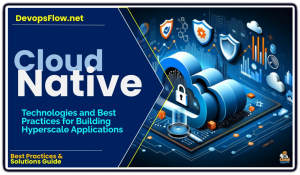Cloud Native with Kubernetes: The Rocket Fuel for Toolchains and Devs
Built for the cloud, not bolted onto it, Cloud Native turbocharges toolchain integrations and hands developers the keys to speed, scale, and resilience.
 If an integrated toolchain is the nervous system of high-performance DevOps, then a Cloud Native architecture is the jet engine roaring beneath it.
If an integrated toolchain is the nervous system of high-performance DevOps, then a Cloud Native architecture is the jet engine roaring beneath it.
It’s not just a buzzword—it’s a paradigm that rewires how tools connect and developers deliver, unshackling teams from the grind of legacy sludge.
Built for the cloud, not bolted onto it, Cloud Native turbocharges toolchain integrations and hands developers the keys to speed, scale, and resilience. In the gauntlet of velocity, this is your afterburner—here’s why it’s a game-changer and how it lights the fuse.
Empowering Developers: Speed, Freedom, Resilience
Cloud Native isn’t about where your app lives—it’s about how it thrives. Think microservices, containers, and dynamic orchestration (hello, Kubernetes), all wired with APIs and managed as code. This architecture is tailor-made for toolchains to snap together like Lego bricks:
For developers, Cloud Native isn’t just plumbing—it’s a superpower. It flips the script from “ship and pray” to “build, break, win”:
- Faster Feedback Loops: Containers (think Docker) package code with its dependencies, so devs test locally and deploy identically. Push to Git, and the toolchain—say, CircleCI—runs the same container in CI. No “works on my machine” excuses; feedback’s instant, and fixes fly.
- Experimentation Unleashed: Microservices let devs own their domain—tweak a feature, deploy it, watch it live—without toppling the stack. Kubernetes handles the chaos, rolling updates or rollbacks with zero downtime. Toolchains amplify this: a failed test halts a deploy, not a team. Developers move fast, fearless.
- Self-Service Power: Cloud Native platforms (AWS, GCP, Azure) paired with IaC give devs on-demand environments. Need a staging cluster? Spin it up. Toolchains tie in—Azure DevOps provisions, Grafana monitors—freeing devs from ticket purgatory. They build, not beg.
- Elasticity at the Core: Cloud Native thrives on demand-driven scaling. A spike in commits? Containers spin up in seconds, not hours. Testing bottlenecks vanish as parallel workloads hum across a cluster. Tools like Azure Pipelines or GitLab CI lean on this elasticity, keeping flow unbroken even under fire.
- Infrastructure as Code (IaC): With tools like Terraform or AWS CloudFormation, your environment isn’t a snowflake—it’s a blueprint. Toolchains plug into IaC, spinning up test beds or production replicas on the fly. No manual server wrangling—just code that talks to code, fast and repeatable.
- Resilience Baked In: Distributed systems, circuit breakers, and auto-scaling mean apps don’t just run—they survive. Devs code with confidence, knowing the architecture and toolchain (e.g., Datadog alerts) catch failures before users do. Less firefighting, more creating.
The payoff? Toolchains don’t just integrate—they accelerate. A Cloud Native backbone turns a stitched-together pipeline into a living, breathing system, slashing lead times and MTTR. It’s the grease that keeps the gears spinning, no matter the load.
So where is the industry at now? In this CNCF talk expert panelists come together to reflect on Kubernetes’ remarkable ten-year journey and to ask the pressing question: are we there yet and what’s still ahead?
They explore the original promises of Kubernetes and cloud native – from infrastructure abstraction to seamless scalability – and honestly assess which goals we’ve achieved and which remain elusive. Moving beyond the hype cycles the speakers examine what “done” really means for cloud native, which problems we still need to solve, and whether we’re asking the right questions as we build toward the next decade.
The Proof: Titans of Velocity
Cloud Native and Kubernetes speaks for itself, delivering global scale performance in the largest of digital enterprise organizations.
Netflix streams to millions with a Cloud Native stack—microservices on AWS, orchestrated by Spinnaker, monitored by Kayenta. Google’s Borg (Kubernetes’ ancestor) powers Search, chaining tools into a relentless delivery machine. Even startups like Monzo bank on this—Kubernetes and GitLab CI pumping out features daily. These aren’t flukes; they’re Cloud Native victories, where toolchains and devs hit warp speed.
Cloud Native isn’t just an enabler—it’s a force multiplier. It fuses toolchains into a unified strike team and arms developers with agility legacy can’t touch. Bottlenecks? Obliterated. Flow? Unstoppable. Next, we’ll unpack the tools and practices that ride this wave—and how you can harness them to dominate the race.



